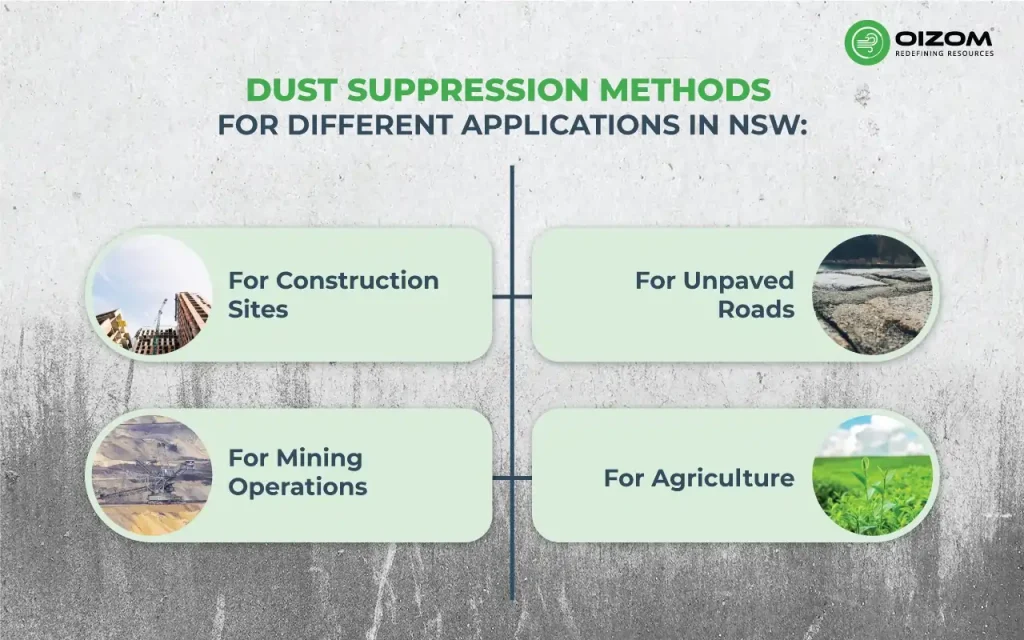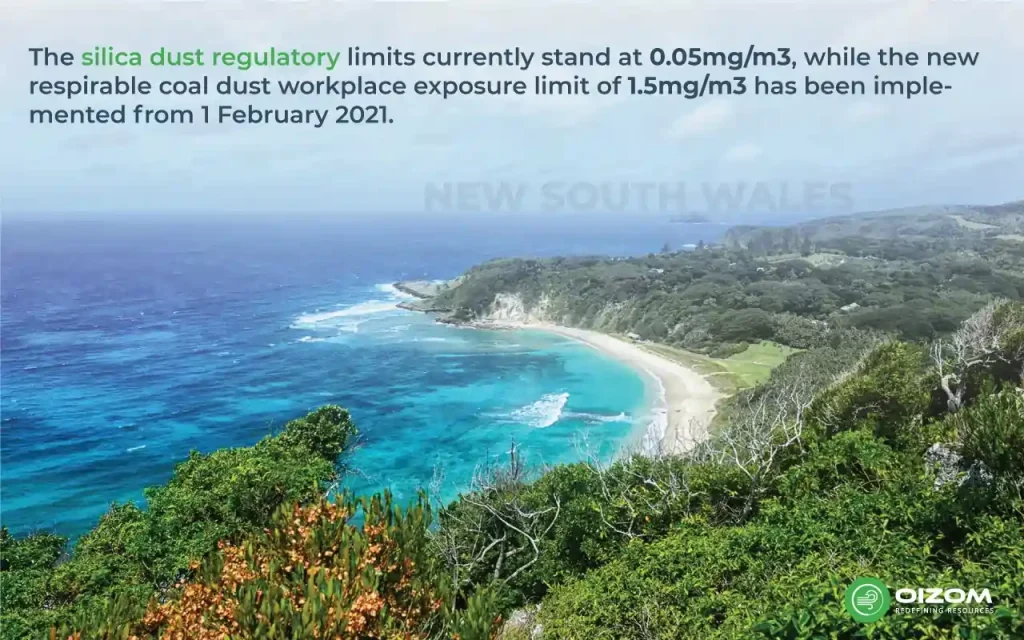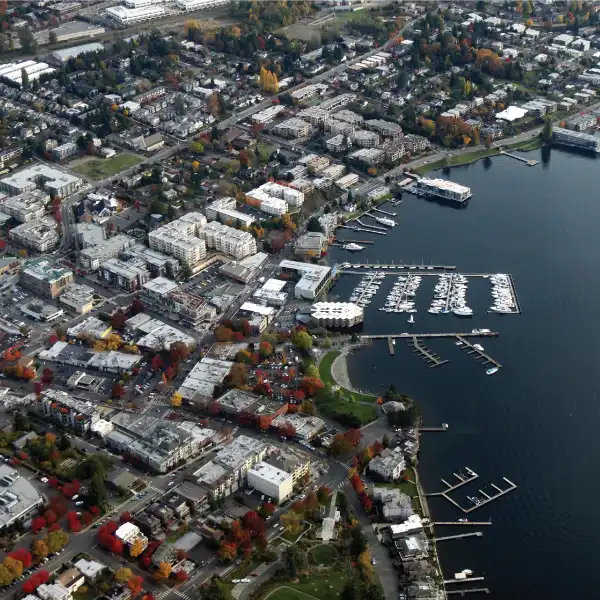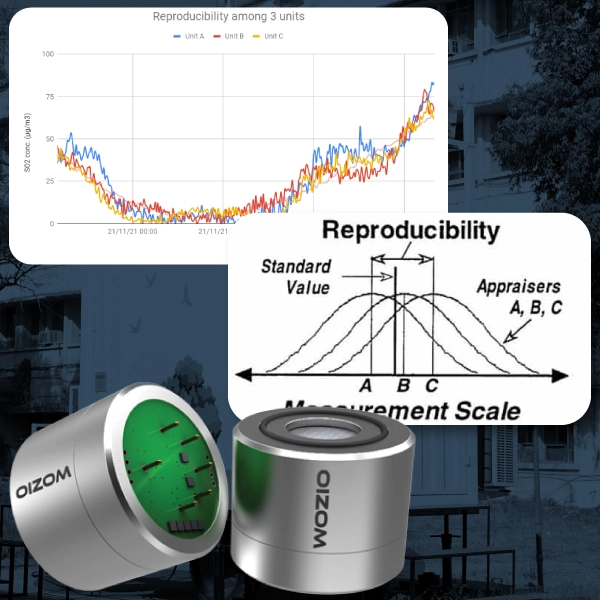Dust pollution is a constant problem in New South Wales (NSW), posing a severe environmental and health risk. NSW’s diverse physical setting, which ranges from bustling urban centres to vast desert locations, exacerbates the situation. Various factors contribute to the growing importance of dust suppression in multiple industries, such as the mining sector, extensive construction activities, the agricultural industry, and numerous unpaved roads.
Dust, consisting of fine and coarse particles, can have far-reaching effects on health, safety, the environment, and operational efficiency. Effective dust control goes beyond just dust suppression; it protects the environment’s health, maintains compliance, optimizes operations, develops positive relationships, and promotes sustainability across various industries and sectors. This blog will guide you through various dust suppression methods for different applications in NSW with regulations and resources. It can help to understand better and address this pressing issue.
How dust pollution is impacting the New South Wales
Dust storms originating from Central Australia and western New South Wales frequently cause high particle concentrations at many sites across New South Wales, both inland and along the coast. Dust deposited over the ocean also promoted phytoplankton growth due to the presence of aeolian iron in the dust.
Airborne dust particles dramatically affect air quality in locations like the Hunter Valley, known for heavy mining operations and huge agricultural plains. This not only reduces visibility, resulting in dangerous driving conditions, but also adds to respiratory problems among people. Rutherford et al. found that dust events were associated with increased asthma severity in Brisbane, Australia. Droughts in New South Wales compound the situation by making the soil more vulnerable to wind erosion. Addressing this issue is crucial for the region’s long-term health and environmental stability.
Source of dust in New South Wales
In Australia, where most people reside in cities and towns along the eastern seaboard, dust storms can occur in central deserts and dry land agricultural and agricultural regions during droughts. Common source locations include western New South Wales (NSW), western Queensland, and the Mallee region of Victoria and South Australia. In New South Wales (NSW), the dust sources are varied. A fundamental cause is the mining sector, particularly in areas like the Hunter Valley, where open-cut coal mining produces large volumes of dust. Construction operations in quickly increasing urban regions also contribute, as excavation, demolition, and building processes emit pollutants into the atmosphere.
Agriculture, a significant activity in NSW, contributes to dust levels through soil disturbance activities such as ploughing and harvesting. Furthermore, the state’s extensive stretches of unpaved roads, especially in rural and outback areas, constitute a significant source of dust, which is stirred up by vehicles and wind. Natural causes also play a role; arid weather and a lack of vegetation, especially in the western and inland regions, cause soil erosion, exacerbating dust pollution.
The haze is a mixture of bushfire smoke and dust from western New South Wales. As particles move from rural locations, like Gospers Mountain, in this case, they make grey cities. In Australia, dust blurs the distinction between the bush and the city. Elsewhere, it blurs the farmlands with the concrete jungles and nation-states with regions. Dust gathers colour. In Australia, dust storms are typically red.
Dust Suppression Methods for Different Applications in NSW:

Each industry, from construction to agriculture, contributes to dust creation, demanding sector-specific solutions.
For Construction Sites
Water suppression systems are critical in construction zones, where excavation and demolition generate vast amounts of dust. Other substances can be added to make it more efficient in capturing airborne dust and preventing dust lift. Using water for dust suppression requires a manual tractor, truck bowser, and automated mist cannons for controlling dust. Wind fences are also useful in disrupting airflow and reducing dust distribution. Dust containment barriers and binding agents, such as eco-friendly dust suppressants, are essential in keeping dust grounded, particularly during high-impact activities.
For Unpaved Roads
Unpaved roads are essential dust sources, particularly in rural and remote regions. Dust suppressants bind dust particles to the road surface and can help reduce their dispersion. Paving these roads is the most efficient but expensive means of converting dusty routes into clean, dust-free surfaces. Implementing speed limits can also help reduce the dust that vehicles generate.
For Mining Operations
Mining companies are responsible for monitoring and controlling their dust emissions because dust is produced at every stage of the mining process: mine construction, extraction, processing, storage, and transportation. Wet drilling techniques using water instead of air can significantly reduce dust during extraction. Post-mining land reclamation, including revegetation, is crucial in stabilizing the soil and preventing future dust generation.
For Agriculture
Agricultural methods cause dust by disturbing the soil. Controlled tillage practices like no-till farming can greatly minimize dust production. Cover crops prevent soil erosion, and crop diversity can improve soil structure and resilience, reducing dust formation. Additionally, farmers adopted several strategies to mitigate dust at agriculture sites, including straightforward but effective water irrigation and preventing soil erosion and airborne dust.
How Oizom Can Help?
Using advanced sensors and data analytics, Oizom systems can accurately measure dust particle concentrations in the air. This real-time monitoring allows for timely and effective responses to dust pollution. For instance, in areas where construction or industrial activities are causing elevated dust levels, Oizom’s data can prompt immediate mitigation measures such as water spraying or adjusting work schedules to reduce dust emissions.
Additionally, Oizom’s comprehensive data analysis helps identify dust pollution trends and sources, enabling long-term planning and policy-making to control dust more effectively. This is especially vital in urban areas where dust contributes significantly to air quality issues, affecting public health and the environment.
Regulations and Resources in New South Wales
Australia has strict dust emissions restrictions to safeguard human health and the environment. These regulations are implemented on both the federal and state/territorial levels.
- National Environmental Protection Measures (NEPM): The NEPM for Ambient Air Quality sets standards for various air pollutants, including particulate matter (PM10 and PM2.5). These standards aim to limit dust emissions and protect air quality nationwide.
- Work Health and Safety (WHS) Regulations: These regulations, enforced at the federal and state/territorial levels, require employers to provide a safe working environment. This includes managing workplace dust-related risks and conducting regular risk assessments to prevent dust-related health issues among workers.
- Environmental Protection Acts: Each Australian state and territory has its environmental protection legislation that includes provisions for controlling dust emissions. These acts empower environmental authorities to regulate and enforce dust control measures for industrial and construction activities.
- Mining Regulations: The mining industry in Australia is subject to specific regulations and guidelines regarding dust control. These regulations are designed to minimize the impact of mining activities on air quality and the health of nearby communities.
In Australia, the government implements dust exposure limits across different states to maintain workplace safety. Here are the dust exposure limits that companies must comply with:
New South Wales- The silica dust regulatory limits currently stand at 0.05mg/m3, while the new respirable coal dust workplace exposure limit of 1.5mg/m3 has been implemented from 1 February 2021.

Conclusion
To summarize, addressing the widespread problem of dust pollution in New South Wales necessitates a diverse and sector-specific approach. Prioritizing dust control is critical for preserving human health and the environment, guaranteeing regulatory compliance, and encouraging safe and efficient industrial operations. Collaborating with competent professionals in dust suppression and control can assist you in assessing your specific needs, identifying dust sources, and developing successful solutions. These conversations are a proactive step towards establishing a cleaner, safer, and more compliant work environment while reducing the environmental effect of dust emissions.
FAQs
Dust suppression in New South Wales (NSW) is crucial due to its significant impact on public health, environmental quality, and visibility. The state's diverse activities, including mining, construction, agriculture, and traffic on unpaved roads, contribute to dust pollution. This can lead to respiratory problems, reduced air quality, and environmental degradation. Effective dust suppression ensures the well-being of communities, protects local ecosystems, and maintains the state's high standards of living and working conditions.
NSW has specific dust control laws and regulations, primarily enforced by the Environmental Protection Authority (EPA), National Environmental Protection Measures (NEPA) and local councils. These regulations mandate that mining, construction, and agriculture industries implement effective dust management practices. The requirements aim to minimize dust emissions' environmental impact and health risks. Compliance with these regulations is crucial for operations to avoid penalties and to protect the environment and public health.
In NSW mining operations, several dust control methods are employed to mitigate the impact of dust. These include water spray systems that dampen the dust at its source, enclosed conveyor systems to prevent dust dispersion, and vegetation barriers around mining sites to reduce wind-blown dust. Additionally, mining companies often use chemical suppressants that bind dust particles and prevent them from becoming airborne. Regular monitoring and maintenance of these systems are crucial to ensure their effectiveness in reducing dust pollution in mining areas.






